There are a number of health advantages people can get from participating in sports. However, playing sports also has the ability to expose athletes to a range of infectious diseases. And, some of the diseases can even cause outbreaks.
An understanding of the most common diseases and their risk factors is important. Risk reduction measures are provided to control and manage infectious diseases. To learn more, read the list of common sports-related diseases that are presented below.
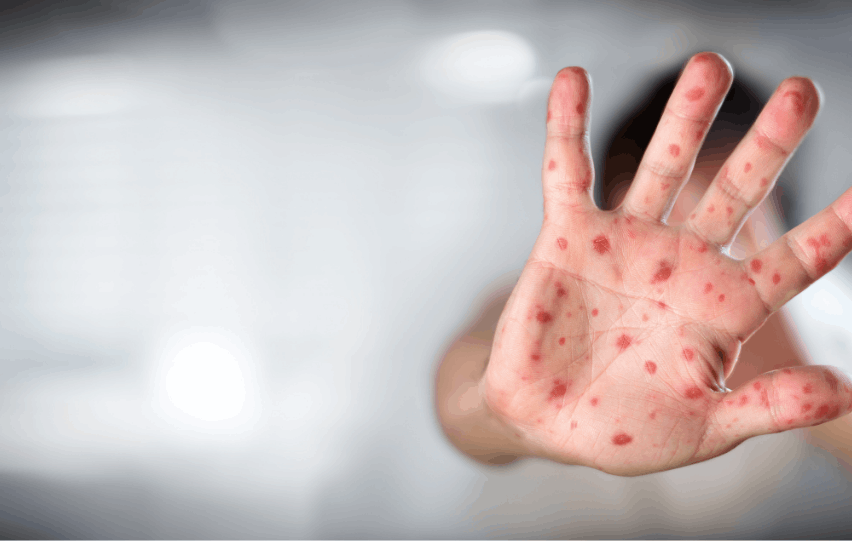
Major Risk Factors for Infection
Infectious diseases can be contracted in many ways by people who play sports. It is crucial to understand the risk factors for infection to know the proper measures of protecting oneself and others.
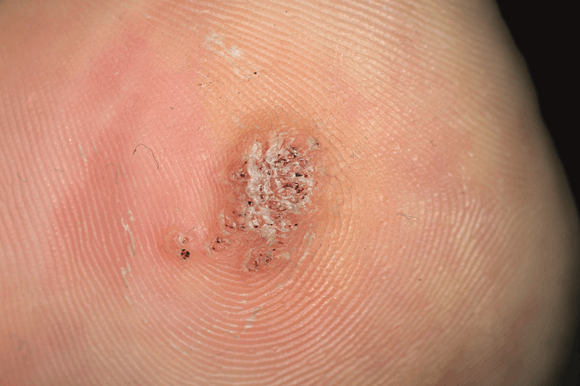
Environmental exposures, skin-to-skin contact with skin-infected athletes, physical injury, contact with contaminated objects, as well as close interaction that is inherent to team sports, and psychosocial influences, are significant risk factors for infection.
As well, sharing of equipment such as towels, drinking vessels, worn protective gear, showers, and locker rooms also contribute to risks. Even contact with athletic surfaces including mats and gym or weight room equipment can transmit infection.
Risk Reduction Measures
Risk reduction includes proper management by the sports community. By using guidelines from sports medicine organizations, the sports organizers should develop a plan for proper cleaning and maintenance of a sanitary sports environment.
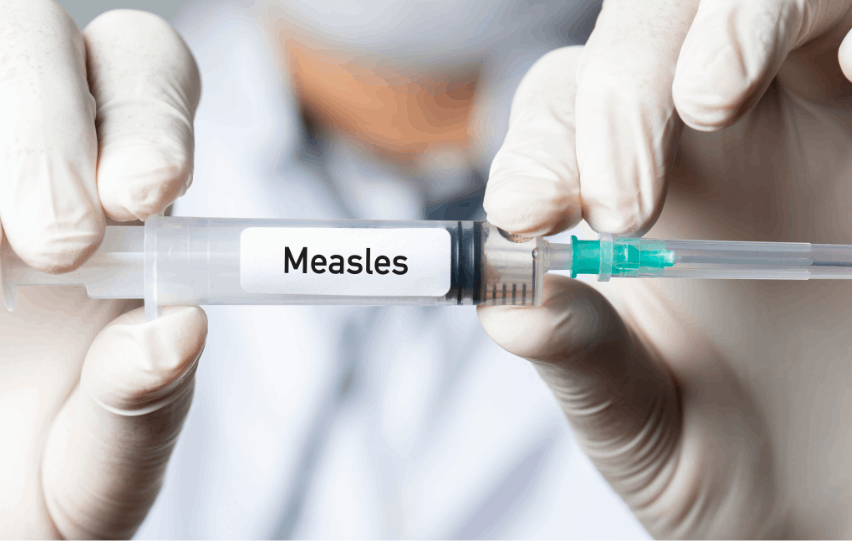
Primary care providers and physicians of the athletes also have a significant role in risk reduction. This meeting between the physician and the athlete helps to highlight potential risks that the athlete might never have thought of.
Moreover, athletes should learn and exercise good hygiene behaviors needed to reduce the risk of obtaining or spreading infection in organized sports. Coaches and trainers have the responsibility to teach and encourage athletes to follow the measures. Let’s look at the top infection risks.
20. Asthma
Airway disease is often a chronic condition in athletes. The most common ones are asthma, exercise-induced asthma (EIA), and exercise-induced bronchoconstriction (EIB). Exercise triggers bronchoconstriction and hyperactivity which can cause an asthma attack. Athletes with an airway disease experience attacks of shortness of breath, wheezing, and a dry cough.
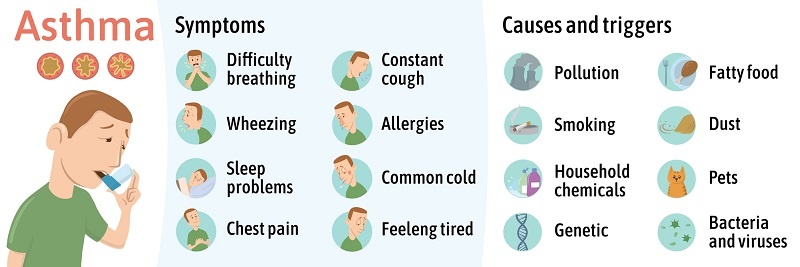
An asthma attack is treated with oral and inhaled steroids, mast cell stabilizers, or leukotriene modifiers. Long-term treatment and medication are needed if the attacks are frequent. In general, an athlete can continue with the sports activity when the attack has been treated and breathing has become normal again.
Athletes with a mild form of asthma are able to participate in most sports. Cold temperatures enhance the symptoms of asthma, so it is better to participate in sports like track and field that take place in warmer and open environments.
19. Hyperthermia
The condition when an athlete’s body temperature rises and remains above normal is called hyperthermia. The normal temperature is 37°C (98.6°F). The body’s failure to thermoregulate triggers this condition. The most severe form of hyperthermia is heatstroke.

A rapid increase in the pulse to 160 – 180 beats per minute is an important symptom of heatstroke. The other main symptom is central nervous system dysfunction and confusion. Other symptoms include inappropriate language, agitation, and apathy. It can even lead to a coma or death if untreated.
Treatment requires moving the athlete to a shaded area. Loosen clothing and remove any equipment like hockey pads. Give the athlete cold water and other oral fluids. If available, administer intravenous fluids, especially if the person is not coherent. After emergency measures have been applied, transport the athlete to a hospital or emergency care facility.
18. Hypertrophic Cardiomyopathy
Hypertrophic cardiomyopathy (HCM) causes most of the sudden cardiac death cases in athletes under the age of 35 in the United States. This is a genetic disorder and there are more than 400 specific gene-mutations. It is estimated that 1 in 500 in the general population has this disorder.

The most common symptom of HCM is fatigue. If the athlete has a chronic feeling of fatigue during and after sports activities, a physical examination is the only way to determine whether it is HCM or not. An indication that it could be HCM is if the medical professional detects an increased left ventricular impulse and murmur.
It is widely accepted that a person with hypertrophic cardiomyopathy must only take part in low-intensity sports such as golf, billiards, and bowling. It often happens that an athlete is already involved in a physically demanding sport when diagnosed with the condition.
17. Anxiety and Panic Attacks
Anxiety is one of the most common conditions in competitive sport. The capacity to be anxious is normal and often even desirable to achieve success. The problem is when anxiety leads to outbursts of irritability or anger. Changes in performance or other behaviors that are uncharacteristic for the person are all red flags.
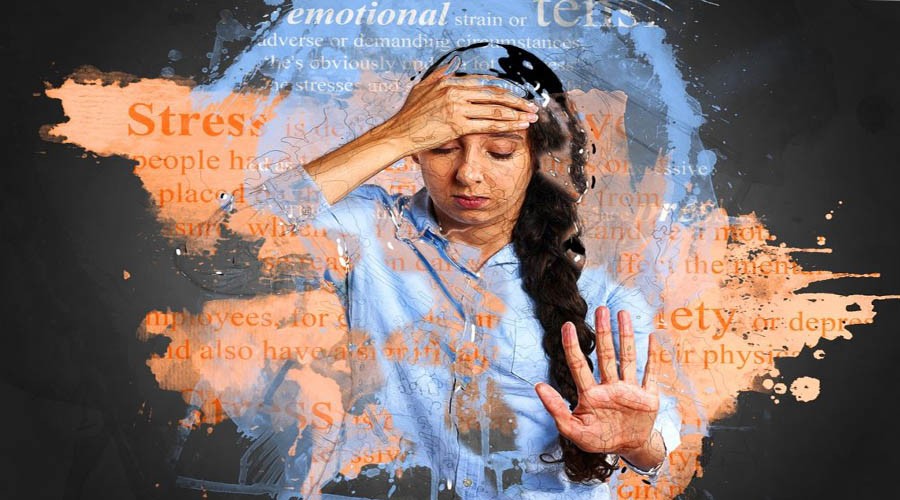
Panic attacks are a result of anxious behavior. The symptoms of a panic attack include chest pain and shortness of breath. Other obvious symptoms include dizziness, sweating, a feeling of choking, chills or hot flashes, and nausea. All these symptoms cause impairment of performance.
Anxiety can be resolved with medication. If an athlete gets anxiety attacks frequently, professional medical help is needed. To proceed with sports participation the athlete should also establish regular times for going to bed and awakening, as well as specific exercising and sports practice times.
16. Sports Hematuria
Hematuria (blood in the urine) is one of the abnormalities commonly found after sports activity. This condition occurs in non-contact sports and contact sports. If routine urine or other tests indicate hematuria in an athlete, the athlete has to be reviewed by the team physician.
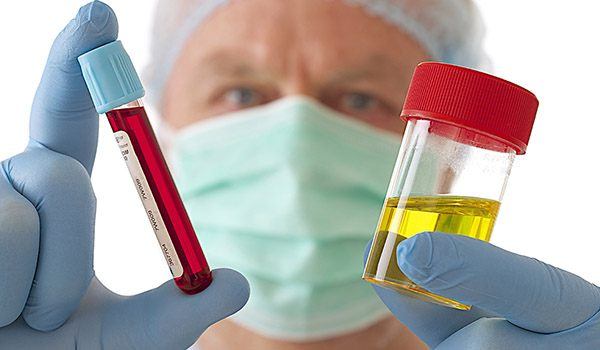
Generally, the athletes where hematuria has been detected are retested after 24 and 72 hours. In most cases, sports hematuria is a benign condition but could require specialized attention. If the athlete experiences painful urination it has to be determined whether there is blood in the urine.
The degree of hematuria is related to the intensity and duration of the exercises done. Generally, the hematuria will resolve within 72 hours. If not, the athlete might have coexisting urinary tract problems.
15. Deep Vein Thrombosis
Deep vein thrombosis (DVT) is a condition where a blood clot becomes lodged in a large vein. Although these clots generally occur in the lower legs, they can occur in any limb. Athletes who have recently had surgery, or have been bedridden, can get DVT. A bus commute or air travel to games can also cause it.
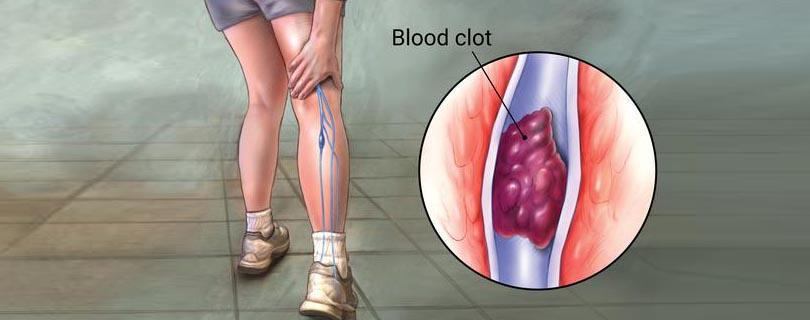
Symptoms of deep vein thromboses include athletes with unexplained pain and limb swelling. Shortness of breath could also be a result of DVT. Treatment requires blood thinners. After successful removal of the clot, the athlete usually must continue using anticoagulants for 3 months or more.
Athletes using anticoagulation remedies should not participate in contact sports. Once anticoagulation is completed the athlete can gradually return to participating in his sport. Prevention is difficult, although it can help to avoid prolonged sitting when traveling by plane, bus, or automobile.
14. Food Poisoning or Bacterial Diarrhea
Food poisoning is suspected when athletes who have eaten the same food become ill at about the same time. Food poisoning occurs when food is improperly handled. It can be the bacterium or toxins that cause poisoning.

The athlete may experience high fever and severe abdominal cramps. It can also result in weight loss and dehydration. Initial remedies for food poisoning and diarrhea include over-the-counter medicines. Sampling and culturing of the athletes’ stool can determine whether it is the case or not.
If the athlete has blood in the stool, a referral is needed for a thorough evaluation. An athlete who has had only food poisoning can return to participate in his sport as soon as he feels better. For bacterial diarrhea, the treating physician will indicate when the athlete can participate again.
13. Insect Bites
In the United States, 1 to 2 million people are allergic to insect venom. This number includes many athletes as well. Bites and stings cause direct irritation to the human body, whether allergic or not. Treat insect bites conservatively with ice and elevation of the affected area. Avoid strenuous exercise and heat when the bites still hurt.
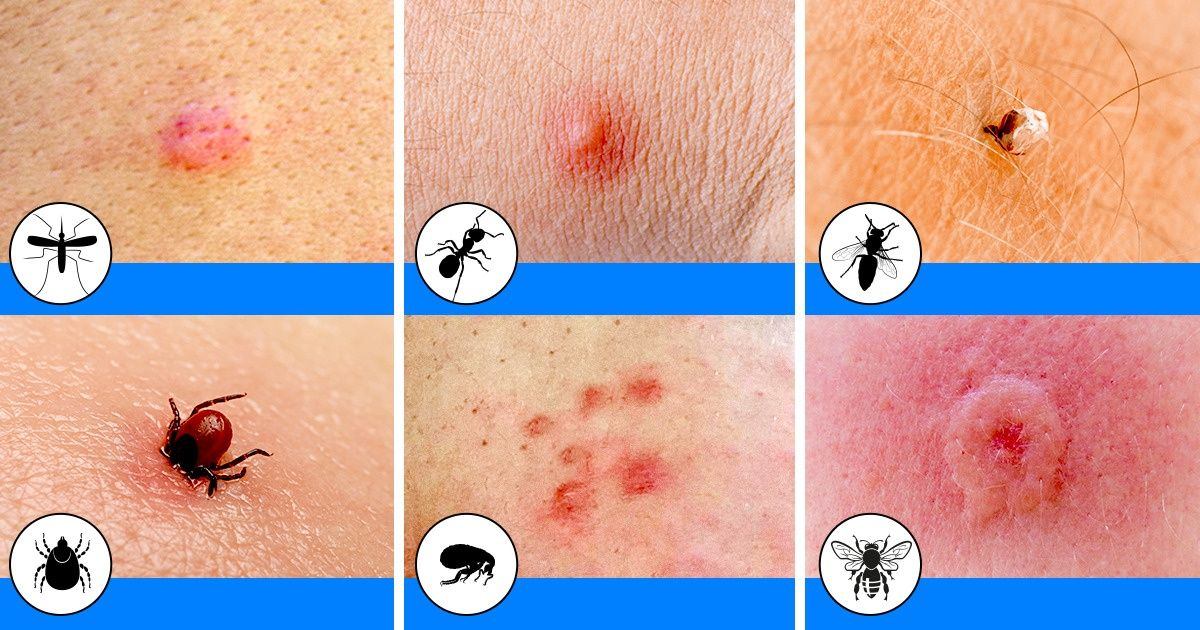
Apply antibiotic ointment may under a sterile dressing to prevent infection. Serious allergic reactions become evident in the first 24 to 48 hours. The athlete must then receive medical attention immediately. Prevention can be difficult. The best athletes can do is to use chemical repellents properly.
Apply the repellent to the clothing as well. When athletes put on shoes, socks, and other apparel that have been left unattended outdoors, they must thoroughly shake them out. Insect bites can actually prevent an athlete from participating in a game.
12. Pregnancy
Pregnancy is not a disease but definitely a health condition! During pregnancy, a women’s body goes through a series of changes. These changes influence the athlete’s ability to exercise and to participate in sport.

Although exercise and physical activity for healthy women should be encouraged in pregnancy, it is not advised to take part in contact sports during pregnancy. Sports like scuba diving and downhill skiing are also sports activities to avoid when pregnant.
Signs to cease exercise and participation in sports while pregnant include vaginal bleeding, shortness of breath, chest pain, and headaches. The gynecologist will discuss the date to return to full exercises and sport participating again.
11. Hepatitis
Hepatitis means inflammation of the liver. The liver is the largest organ in the body and it functions as the main organ of glucose homeostasis. Damage to the liver has repercussions for a variety of body functions. Hepatitis A and hepatitis E are highly contagious forms of infectious disease.

Athletes with hepatitis could experience malaise, fatigue, nausea, and vomiting, with mild abdominal pain. Some athletes have headaches, fever, and a rash. Hepatitis generally resolves within 4 to 8 weeks. Until the athlete patient has completely recovered, contact with other athletes should be prevented.
To prevent the possible spread of the disease, other athletes who have been in contact with the athlete with hepatitis may receive immune globulin and initiation of a vaccine. Athletes who participate in contact sports may need laboratory tests to determine any residual effects before resuming full activity.
10. Measles
Measles is a disease caused by a virus. The symptoms include a high fever, a cough, a runny nose, and red and watery eyes. After some days, a rash erupts on the face and upper neck and it spreads to the hands and feet.
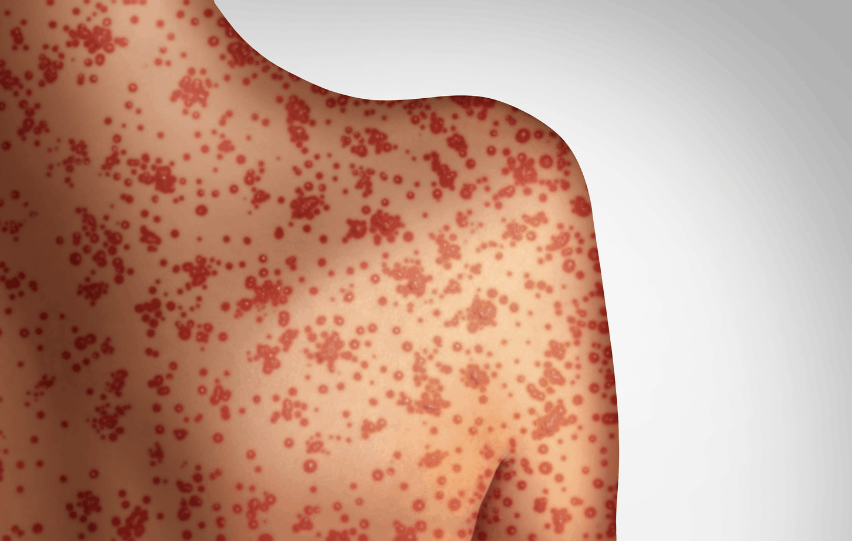
This disease is highly contagious four days before the rash to four days after the rash appears in the patient. Measles outbreaks reports happened during various types of sporting events ranging from gymnastics to skiing and fencing.
Thus, adequate vaccination of all athletes is necessary. In previously immunized people, primary vaccine deficiency is a more frequent cause of failure than weakening immunity. Athletes need to get a 2-dose vaccination program.
9. Mumps
Mumps is an infection resulting from swelling of one or more of the salivary glands, usually the parotid glands. A respiratory tract infection affects up to one-third of mumps outbreaks.
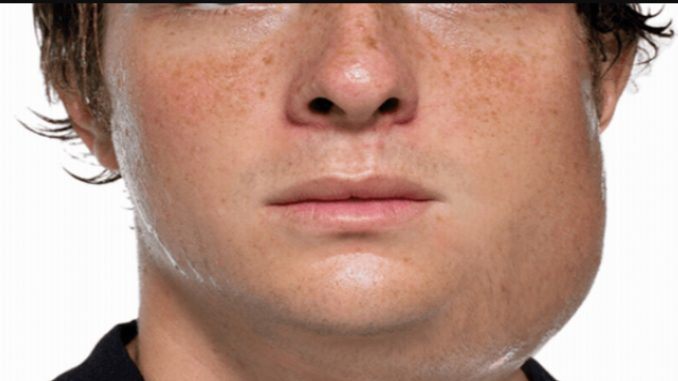
Around 10% of patients have viral meningitis and various other symptoms can also (though seldom) occur, such as arthritis, mastitis, myocarditis, permanent hearing loss, thyroiditis, glomerulonephritis, and pancreatitis.
The prevalence of the disease has reduced dramatically due to the arrival of the measles-mumps-rubella (MMR) vaccine’s 2-dose schedule. However, outbreaks do occur periodically, mostly attributable to insufficient vaccination.
8. Scabies and Lice
Scabies and lice, while not widely mentioned in sports, can cause disqualification to the athletes involved in organized sports, particularly contact sports, if detected. They are mainly transmitted through person-to-person contact.
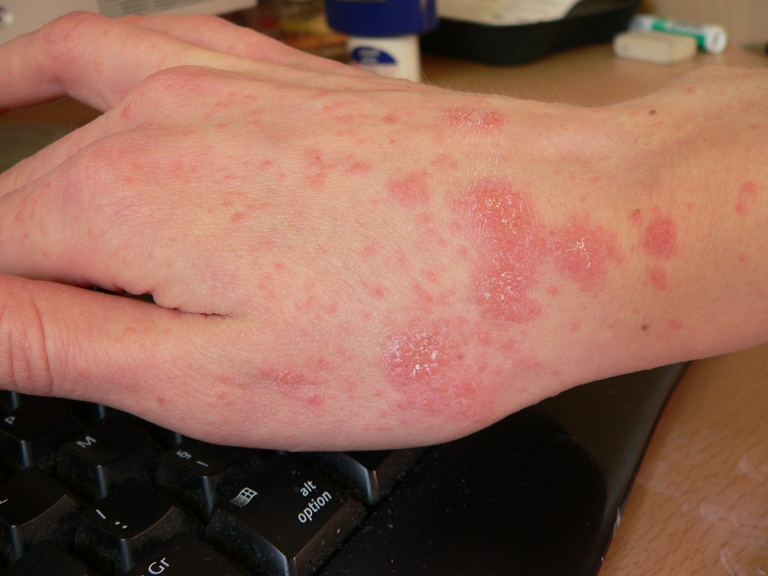
The scabies parasite may live on clothes for up to 4 days without skin contact. While lice do not last longer than 1 to 2 days away from the scalp without a blood meal, they may be passed on by hairbrushes, combs, hair accessories, and hats.
Permethrin is used in adults and children 2 months of age and older to treat scabies and lice. Counseling is crucial to reducing the burden of lice and scabies with respect to adequate identification and proper use of successful therapies.
7. Methicillin-resistant S Aureus
Methicillin-resistant S aureus acquired by the community is a source of skin infection outbreaks in high school and college athletes involved in contact sports, including football players and wrestlers, and is associated with severe morbidity.
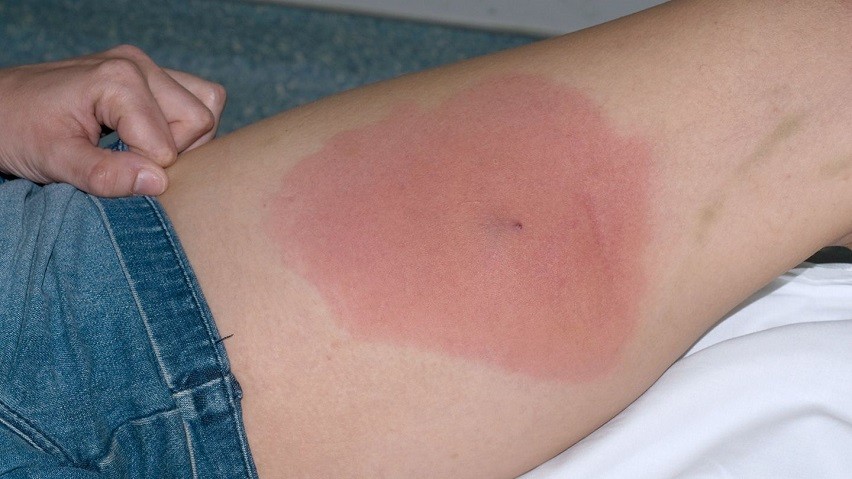
It presents mostly as cellulitis or skin abscesses, but in up to 10 percent of cases, it can lead to invasive diseases such as bacteremia, fasciitis, myositis, pneumonia, septic arthritis, and osteomyelitis.
Skin-to-skin contact, equipment or clothes sharing, skin cracks combined with turf burns or trauma, and a higher BMI are major risk factors in getting infected with Methicillin-resistant S aureus. Methicillin-resistant S aureus can be managed and prevented through good hygiene practices, and avoiding exposure to infected people, things, and places.
6. Verruca Vulgaris
Verruca Vulgaris, also called common skin warts, are a benign epithelial proliferation of the skin caused by human papillomaviruses. Usually, they are painless, large in number, and appear on every epithelial surface.
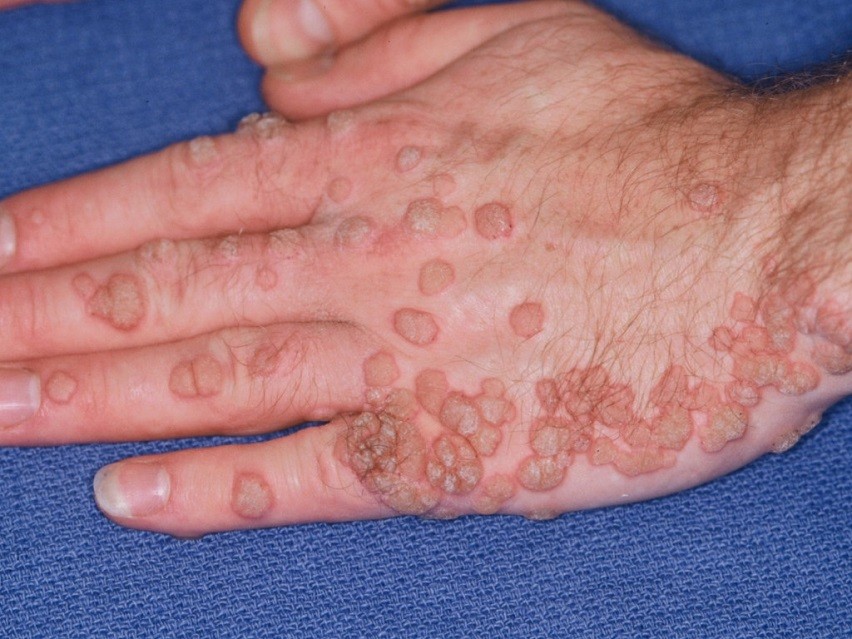
These are most common on the hands, feet, and nails. They are presented as clotted blood vessels that look like black dots. They have developed into the wart when they are pared down as well as the associated loss of overlying dermatoglyphics.
Reports suggest that warts may occur among athletes in outbreaks. Listed risk factors tend to include equipment sharing and exposure of bare feet in common shower areas.
5. Tinea Corporis and Capitis
Tinea corporis and Tinea capitis infections among high-school wrestlers and judo athletes have been identified as more common than among other athletes. Tinea corporis disease studies have included the use of potassium hydroxide tests to help treatment.
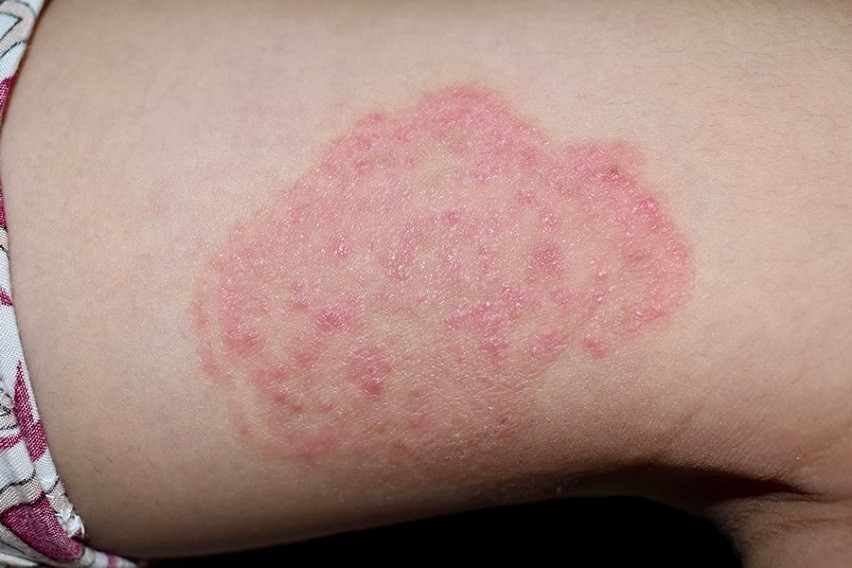
In a study, 24% of 29 wrestlers had Tinea corporis lesions, compared with 0 in a group from the track team. A different study reported that Tinea corporis was found in 10 of 19 boys aged 15 to 17 years from the same judo club in Kyoto, Japan.
For the treatment of Tinea corporis, both skin-based and oral medicines are available. But Tinea capitis is treated primarily with oral medicines, often with the combined action of topical treatment to the scalp.
4. Tinea Pedis
Tinea pedis or athlete’s foot is a very common fungal infection found on the foot. It shows as a fine scaly or vesiculopustular eruption that is often itchy. The lesions may include all areas of the foot, but the fissures and scaling between toes are usually included.
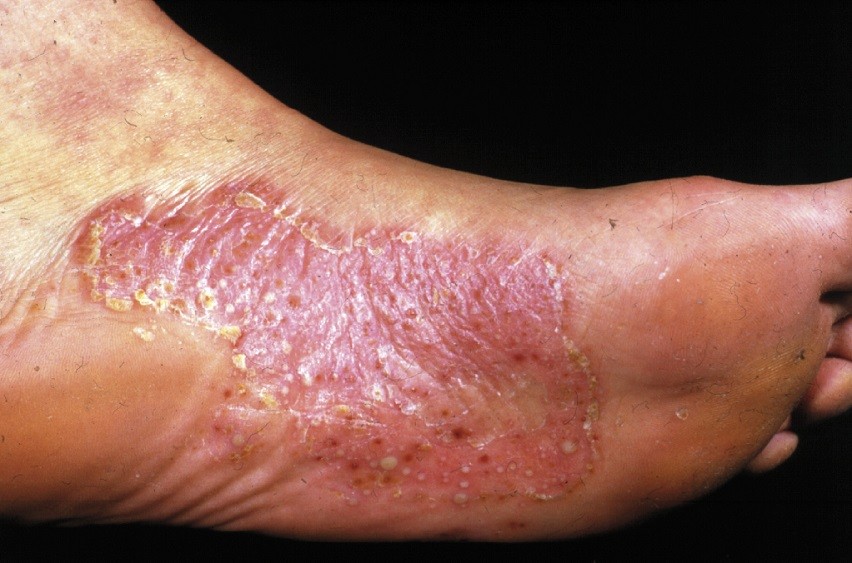
Increased Tinea pedis levels have been well recorded and widespread among swimmers and runners, particularly marathon runners with up to 22% of documented infections.
In warm, humid conditions, Tinea pedis is predominant by close interaction with the organism and mostly affects males rather than females. Additional risk factors for Tinea pedis include obesity and diabetes.
3. Tinea Cruris
Tinea cruris, also known as jock itch or crotch rot, is a common fungal infection of the groin and inner thighs. Causes of this infection are heat, humidity, and hyperhidrosis as well as wearing wet or tight-fitting clothes. Additional risk factors include obesity and diabetes.
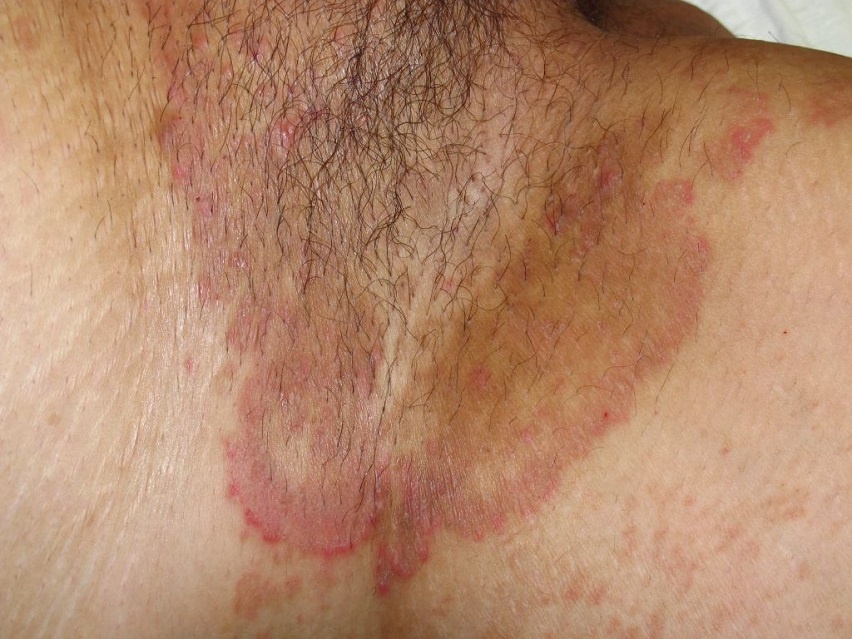
This disease can be passed on through contaminated fomites such as infected bed sheets or towels. It also can spread by autoinoculation of Tinea-infected hands or feet from another location of the body.
In order to treat jock itch, doctors usually prescribe a topical antifungal medicine to be applied 1-2 times a day for at least two weeks. To help keep the area dry, patients should add powder every day. The itching can be lessened with over-the-counter medicine.
2. Group A Streptococcus
Group A Streptococcus was linked with skin infection outbreaks after indoor football matches, rugby, and other team sports. Localized skin infections such as pyoderma and cellulitis, or invasive infections like myositis and sepsis may be caused by the organism.
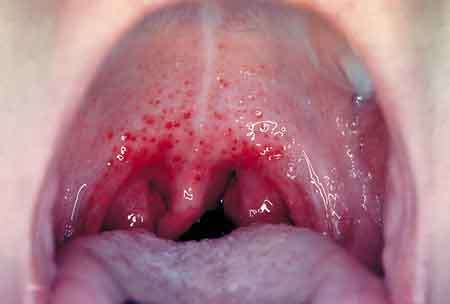
Outbreaks of pharyngitis in university students with an average age of 19.5 years involved in judo have also been linked with this disease. During 15 days, 12 out of 23 club participants in Tokyo, Japan, had sore throats and high fever.
Controlling the Group A Streptococcus outbreaks has been achieved due to strict hygiene education and procedures, restricting exposure to infected people, surfaces, and items, environmental cleanup, and adequate care of infected individuals.
1. Molluscum Contagiosum
Molluscum contagiosum is a common viral skin infection that produces a mild, harmless skin disease marked by lesions that can occur anywhere in the body. The condition typically recovers without scarring within 6-12 months up to 4 years.
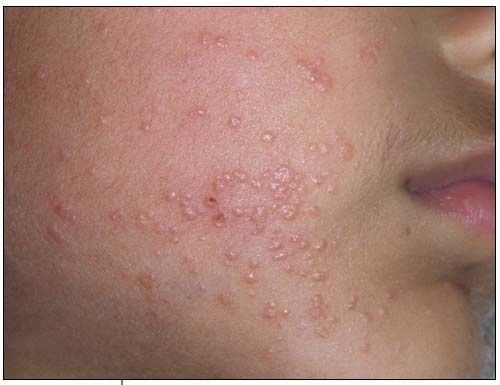
The lesions are small, elevated, and typically white, pink, or flesh-colored with a dimple or pit in the middle. Sometimes, they have a pearly look. It is often asymptomatic but may manifest with irritation, itching, redness.
Molluscum contagiosum outbreaks have most frequently been identified in connection with existing eczema and exposure to swimming in public pools. Other factors include skin-to-skin contact, sharing of fomites, young age, and tropical climates.

Conclusion
The above infectious diseases are common in team sports as opposed to individual sports participation. Athletes’ physical contact, equipment sharing, and sports surface contact are causes of infection spread among teams.
Sports management as well as individual players need to do their part in preventing such infections. It is important to rely on good hygiene habits, diagnosis, and treatment of common sports-related infections before an outbreak affects a whole team.







